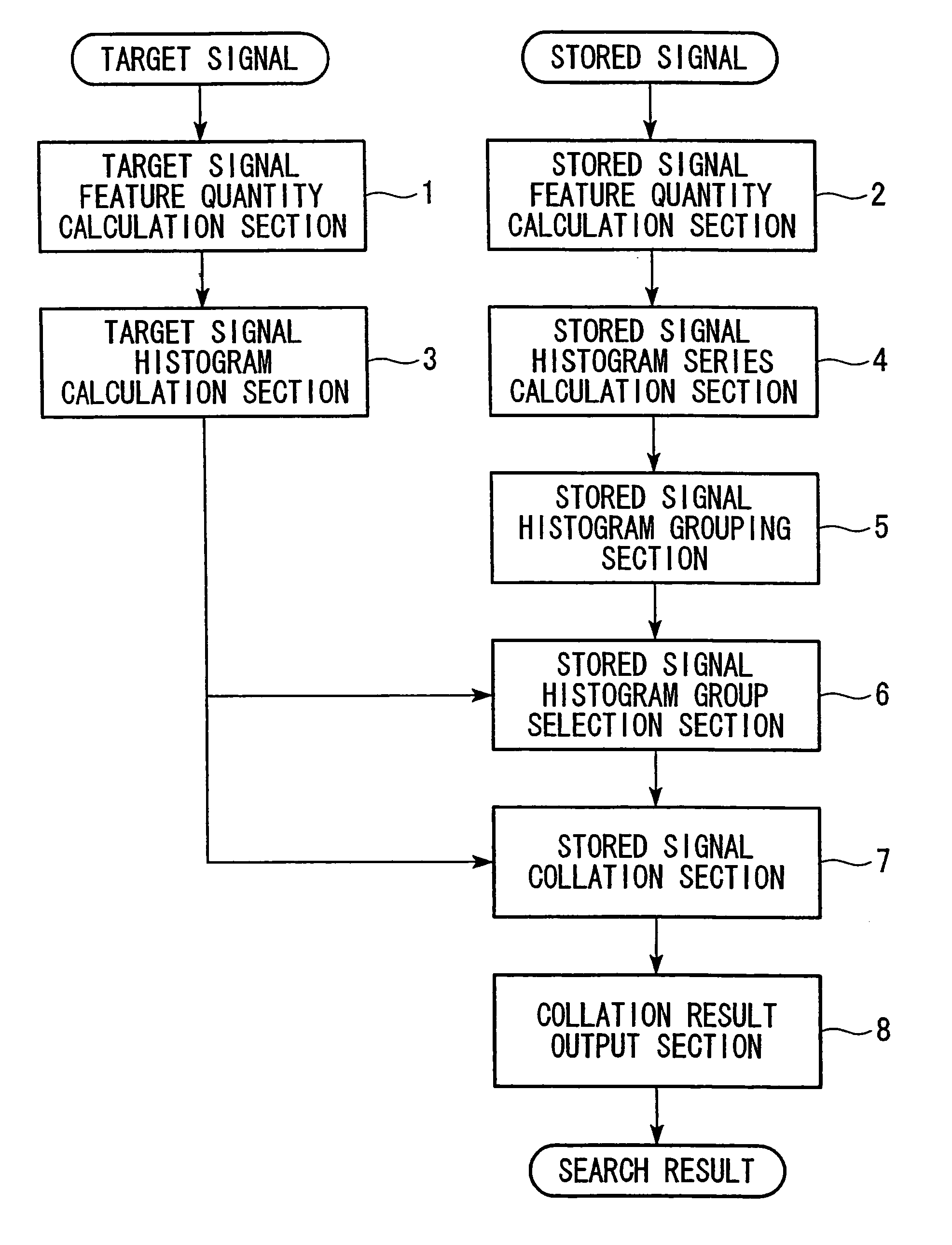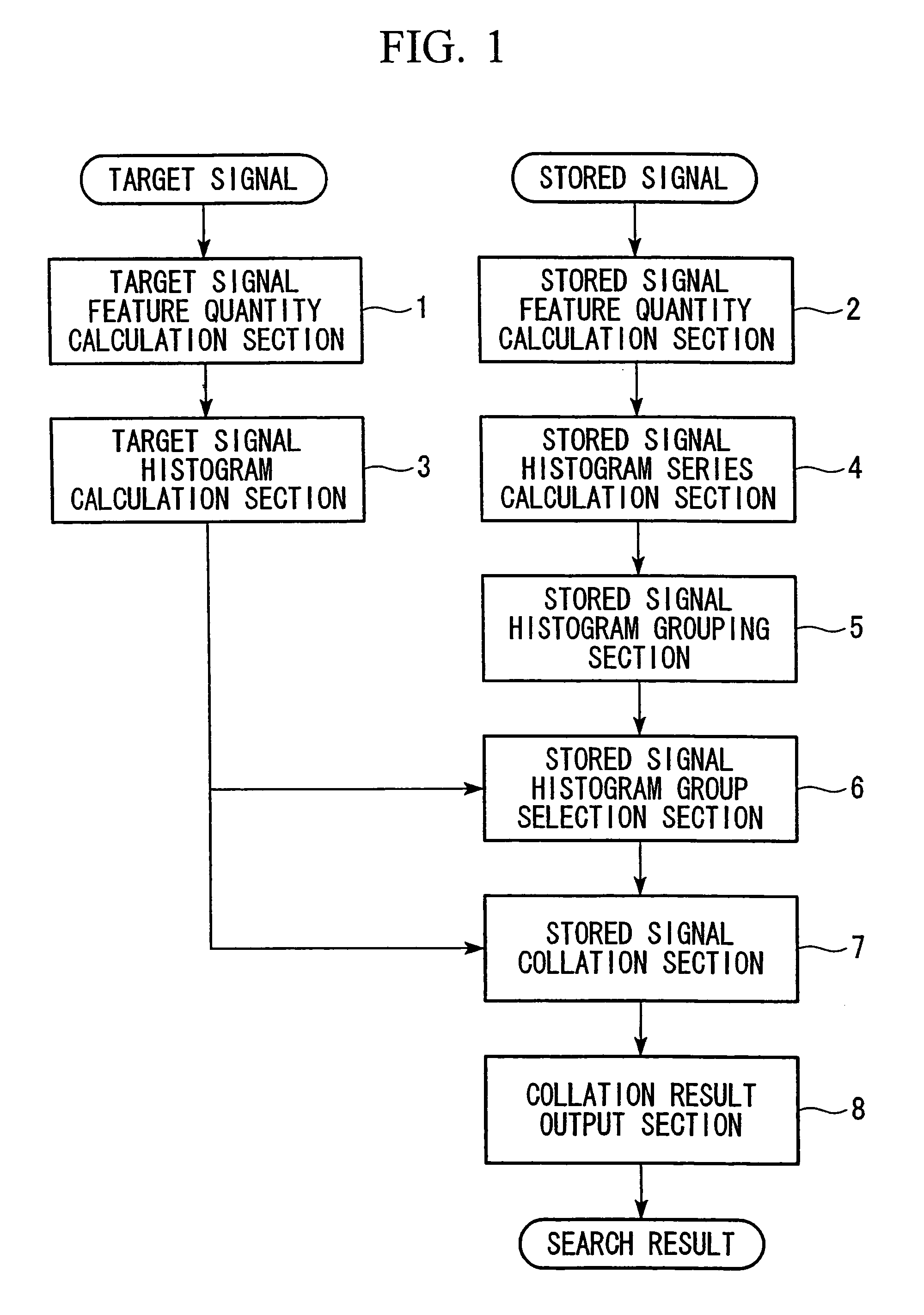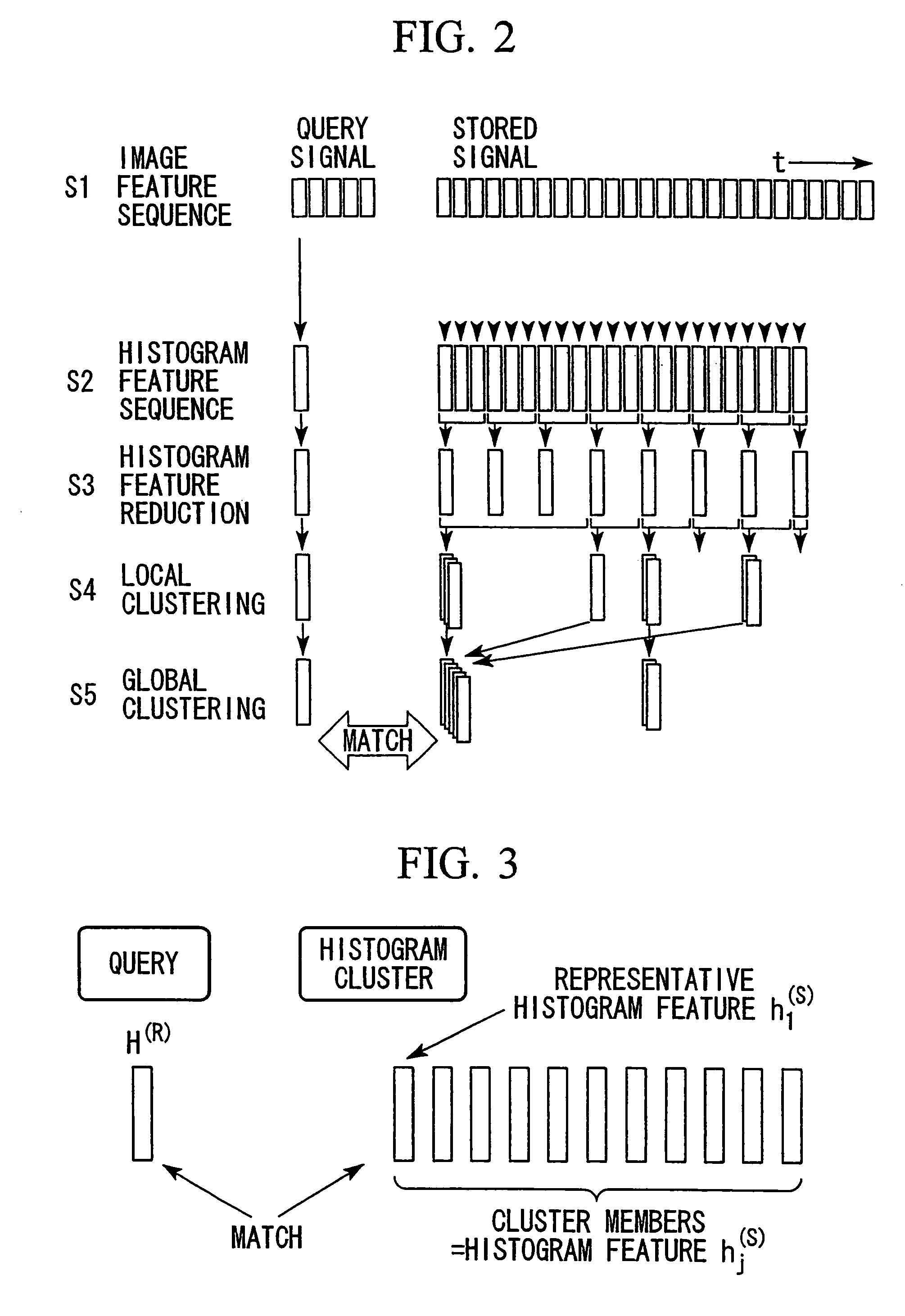Signal detection method, signal detection system, signal detection processing program, and recording medium recorded with program thereof
a signal detection and signal detection technology, applied in the field of signal detection systems, signal detection processing programs, and recording media recorded with program thereof, can solve the problems of search based solely on lb>1/b> distance, inability to perform, etc., and achieve effective partial signal detection, narrow search space, and maintain search accuracy
- Summary
- Abstract
- Description
- Claims
- Application Information
AI Technical Summary
Benefits of technology
Problems solved by technology
Method used
Image
Examples
first embodiment
[0025]Next, an embodiment of the present invention is explained with reference to the drawings.
[0026]FIG. 1 is a block diagram showing a first embodiment of a signal detection system with the method of the present invention applied.
[0027]Although apparatuses subject to video signals are principally explained below, searching of sound signals can be performed by performing feature extraction from sound signals, which represent the target signals and the stored signals, in the target signal feature quantity calculation section 1 and the stored signal feature quantity calculation section 2 in the same configuration as mentioned below.
[0028]The signal detection system of the present first embodiment is configured by the target signal feature quantity calculation section 1, the stored signal feature quantity calculation section 2, a target signal histogram calculation section 3, a stored signal histogram series calculation section 4, a stored signal histogram grouping section 5, a stored...
second embodiment
[0089]Next, a second embodiment is explained with reference to FIG. 1. The second embodiment is the same as the first embodiment in terms of the configuration. The point in which the second embodiment differs from the first embodiment is the point that following the stored signal histogram grouping section 5 performing local grouping represented by S4 in FIG. 2, these local groups are further grouped, and global grouping is performed.
[0090]Hereunder, the global grouping performed in the stored signal histogram grouping section 5 is explained.
[0091]In global grouping, groups are made such that the similarity level between all elements within the group with the representative histogram features of the group thereof become greater than the threshold θ(G). Here, the G of θ(G) represents that it is a threshold used with respect to global grouping. This threshold θ(G) is one based on the lower limit (the upper limit of the similarity level) of the L1 distance in regard to global grouping....
third embodiment
[0102]Next, a third embodiment is explained with reference to FIG. 4.
[0103]The third embodiment of the present invention shown in FIG. 4 is, in terms of the configuration, the same configuration as the first and the second embodiments shown in FIG. 1. The point of difference is that a stored signal histogram thinning section 9 is further provided between the stored signal histogram series calculation section 4 and the stored signal histogram grouping section 5.
[0104]That is to say, as explained in the first and the second embodiments, not all feature vectors in S2 of FIG. 2 are used, and the histogram series is created while moving the feature vectors by a fixed number as shown in S3 of FIG. 2, that is to say, by performing thinning.
[0105]For example, if the thinning number is made to be M=50, the number of histograms used at the time of histogram grouping can be compacted from 50 to 1.
[0106]In this manner, as well as being able to reduce the recording device capacity needed for rec...
PUM
 Login to View More
Login to View More Abstract
Description
Claims
Application Information
 Login to View More
Login to View More - R&D
- Intellectual Property
- Life Sciences
- Materials
- Tech Scout
- Unparalleled Data Quality
- Higher Quality Content
- 60% Fewer Hallucinations
Browse by: Latest US Patents, China's latest patents, Technical Efficacy Thesaurus, Application Domain, Technology Topic, Popular Technical Reports.
© 2025 PatSnap. All rights reserved.Legal|Privacy policy|Modern Slavery Act Transparency Statement|Sitemap|About US| Contact US: help@patsnap.com



